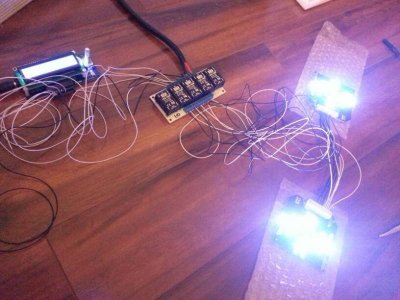_shorty_
New member
So are you running your 1000s off the same power supply as your 700s? If so, how is that functioning because I don't know how you could provide power to the LDDs at different amperage and different voltage and not fry them..I would assume each has a max input and also assuming you have them wired parallel to each other...
Depending on which LDDs you get (Ls vs Hs - example LDD-1000H vs LDD-1000L) - they allow for different input voltages. They do all the work for you regarding amps and voltage output to your LED string assuming you have a load (total voltage of your LEDs) lower than the max output of the driver. Add a couple volts to your calculations for the driver itself.
Ultimately - add up the voltage of each LED in a string add a couple volts. Do this for each LED string. Take the largest one - and make sure your power supply can go at least that high with supply voltage. Also make sure you get the proper LDD drivers to handle the voltage of each string ( you can probably use H's to be safe across the board). You are driving each string at a certain amount of amps - defined by which LDD driver you get. You can add the Amps of each string up, for your total Amp rating of power supply you need. For example - if you have 5 colors/strings of LEDs, driving two at 1A each and 3 at 700mA - your power supply needs to be able to supply at least (1 x 2) + (.7 x 3) = 4.1A total.


